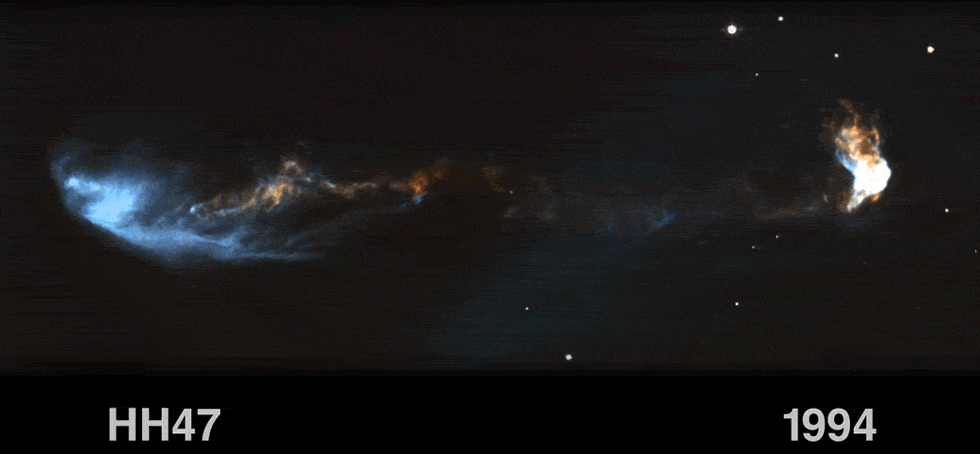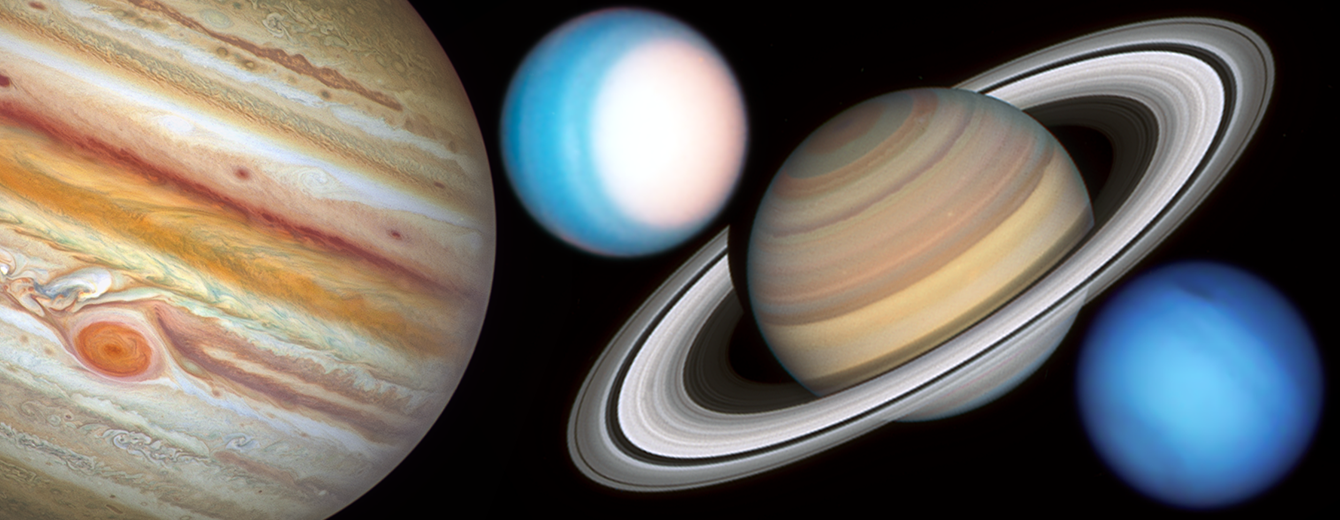Stars form in large clouds of gas and dust called nebulae that scatter the visible wavelengths of light our eyes can see. The longer wavelengths of infrared light can pass through the cloud relatively undisturbed. Hubble’s near-infrared capabilities and high resolving power make it an important tool in the study of how stars form.

Hubble’s observations of nebulae reveal bizarre landscapes sculpted by radiation from young, exceptionally bright stars. The observations reveal the violent process of star birth that produces intense ultraviolet radiation and shock fronts. The radiation clears out cavities in stellar nursery clouds and erodes material from giant gas pillars that are incubators for fledgling stars.

Hubble also captured energetic jets of glowing gas from young stars in unprecedented detail. These jets, called Herbig-Haro objects, are a byproduct of gas swirling into newly forming stars. The jets form when the star’s magnetic field channels gas toward the spinning star’s poles where it shoots out at supersonic speeds in opposing directions. Hubble’s longevity allows astronomers to observe Herbig-Haro objects over time. These observations show us how these jets evolve as they travel through the interstellar medium. Measuring and studying the motions and shape changes of Herbig-Haro objects helps astronomers untangle the complicated physical processes that form them, while also providing clues about the environment in which newborn stars develop.


Learn More
Hubble Science Highlights
Discover the breadth and depth of Hubble's exciting discoveries!

Studying the Planets and Moons
Hubble’s systematic observations chart the ever-changing environments of our solar system's planets and their moons.

Tracking Evolution in the Asteroid Belt
These conglomerates of rock and ice may hold clues to the early solar system.

Uncovering Icy Objects in the Kuiper Belt
Hubble’s discoveries helped NASA plan the New Horizon spacecraft’s flyby of Pluto and beyond.

The Death Throes of Stars
When stars die, they throw off their outer layers, creating the clouds that birth new stars.

Finding Planetary Construction Zones
Hubble’s sensitivity uncovers the seeds of planets in enormous disks of gas and dust around stars.

Recognizing Worlds Beyond Our Sun
Hubble can detect and measure the basic organic components for life on planets orbiting other stars

Seeing Light Echoes
Like ripples on a pond, pulses of light reverberate through cosmic clouds forming echoes of light.

Tracing the Growth of Galaxies
Hubble's Deep Field observations are instrumental in tracing the growth of galaxies.

Galaxy Details and Mergers
Galaxies evolve through gravitational interaction with their neighbors, creating a menagerie of forms.

Monster Black Holes are Everywhere
Supermassive black holes lie at the heart of nearly every galaxy.

Homing in on Cosmic Explosions
Hubble helps astronomers better understand and define some of the largest explosions in the universe.

Discovering the Runaway Universe
Our cosmos is growing, and that expansion rate is accelerating.

Focusing in on Gravitational Lenses
Gravitational lenses are 'Nature's Boost', expanding our view deeper into space and farther back in time.

Shining a Light on Dark Matter
The gravitational pull of dark matter guides the formation of everything we can see in the universe.

Mapping the Cosmic Web
Filaments and sheets of matter create an interconnected web that forms the large-scale structure of the universe.



